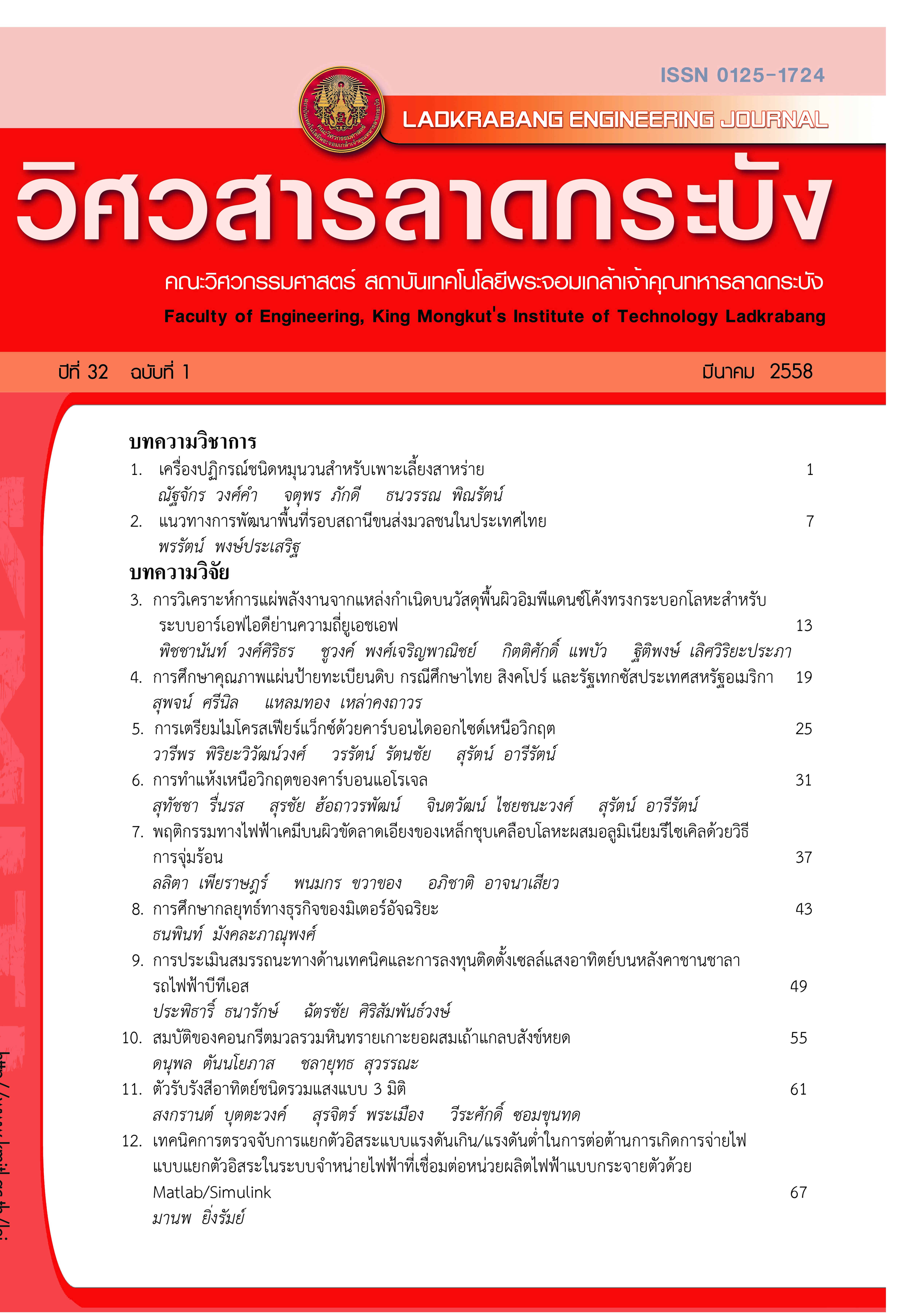The Guidelines for Transit Oriented Development (TOD) in Thailand
Keywords:
Transit Oriented Development (TOD),, Mixed land use,, Rail transit system,, PedestrianAbstract
Smart growth by using Transit oriented development (TOD) approach which is to develop an area of 400-500 meter surrounding transit stations with mixed land use. It can change an urban sprawl to be compact city along the transit stop position. Moreover, it can generate work and enhance economic growth to suburban area. Ridership numbers of rail transit system will increase definitely after implemented TOD. In contrast, car usages will be reduced which significantly impact cost of traveling and daily expense of people who live in suburban areas. Key elements of TOD are mixed land use in moderate to high density development, mixture design of building between vertical and horizontal expression such as residential, office building, shopping mall, and other commercial areas etc. The comfort and safety of pedestrian and bicycle facilities should be provided. The effective connection between all buildings and transportation system will add more performance of area usage. The variety of public transportation mode choices is also important to project. Moreover, an improving the agreement, rule and regulation such a reduction of car parking numbers in building in order to encourage the success of TOD projects.
References
[2] Common wealth of Massachusetts (2011). Transit-Oriented Development: Making It Happen. Smart Growth/Smart Energy Toolkit. [Online]. Available: http://www.mass.gov/envir/smart_growth_toolkit/pages/mod-tod.html
[3] The Bureau of Registration Administration, Department of Provincial Administration, Ministry of Interior (2014). A Statistic of updated population numbers in Thailand. [Online]. Available: http://stat.dopa.go.th/stat/statnew/upstat_m.php
[4] Office of Transport and Traffic Policy and Planning, Ministry of Transport. The Guidelines for Infrastructure planning of Thailand in 2013. [Online].Available:http://www.otp.go.th/images/stories /8- OTPJournal/otpjournal5_04_56.pdf
[5] National Statistic Office, Information and Communication Technology Center (2012),Time values of travelling of employee in Bangkok city.
[6] Bangkok Mass Transit System Public Company Limited. Ticket information; BTS 30-Day Smartpass [Online]. Available:http://www.bts.co.th/ customer/th/01-conditions-thirtyday-person.aspx
[7] Bangkok Metro Company Limited (BMCL) (December 23, 2011). New BMCL boss eyes boosting commercial revenue [Online]. Available: http://www.nationmultimedia.com/business/New-BMCL-boss-eyes-boosting-commercial-revenue-30172472.html
[8] State Railway of Thailand, Ministry of Transport (2004). Detailed Design of Bangkok Airport and Suvarnabhumi airport rail link project, Executive summary report. [Online]. Available: http://www.otp.go.th/images/stories/7projectotp/2551/16/Arlex_ExecutivesummaryEng.pdf
[9] Strategy and Evaluation Department, Bangkok (2013). Statistics of Bangkok 2013. [Online]. Available:http://office.bangkok.go.th/pipd /07Stat%28Th%29/Stat_57_6M/Stat_Detail.html
[10] Thapana Bunyapravit (2012). An Innovation of Urban Re-development for Thailand. [Online]. Available:http://asiamuseum.co.th/upload/forum/ FormBasedCodes.pdf
Downloads
Published
How to Cite
Issue
Section
License

This work is licensed under a Creative Commons Attribution-NonCommercial-NoDerivatives 4.0 International License.
The published articles are copyrighted by the School of Engineering, King Mongkut's Institute of Technology Ladkrabang.
The statements contained in each article in this academic journal are the personal opinions of each author and are not related to King Mongkut's Institute of Technology Ladkrabang and other faculty members in the institute.
Responsibility for all elements of each article belongs to each author; If there are any mistakes, each author is solely responsible for his own articles.






